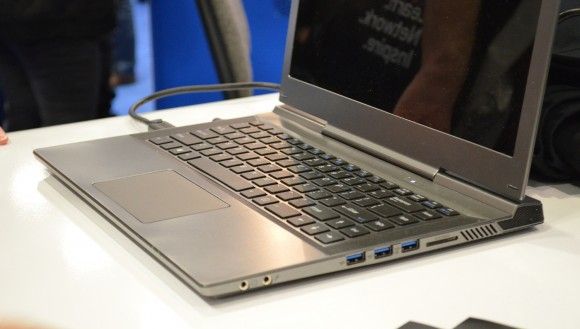At GDC 2013, Intel announced that their next-gen Haswell graphics will support a new bit of tech called PixelSync as well as DirectX 11.1. PixelSync on Hawell graphics enables two rendering techniques called ASVM and AOIT which can cost a standard GPU up to 80% of it’s performance but runs smoothly with Haswell’s integrated graphics. The developers behind Grid 2 are using Haswell’s new tech to bring graphically rich games to the masses.
According to Intel, PixelSync “allows the programmer control over the ordering operations across pixel pipes.” Ordered pixels means predictable rendering behavior and “allows programmers to properly composite partially transparent pixels without the need for an expensive sorting operation”. Another technique enabled by Haswell is InstantAccess which allows the CPU to write to GPU memory.
Combined together, PixelSync and InstanAccess allow for high performance Adaptive Volumetric Shadow Mapping (AVSM), something that game developers have wanted for a long time, according to Intel. With AVSM, volumetric effects like smoke can be properly lit in real-time without a huge drain in performance. Intel told us that attempting AVSM without their Haswell tech could cost a game 80% of it’s performance. With Haswell, that comes down to 5-10%. The techniques enabled by Haswell graphics are also useful for rendering hair, windows, foliage, fences and other complex geometry.
Legendary racing game developer CodeMasters showed us AVSM put to practical use in the upcoming Grid 2. With AVSM, smoke trails from drifting vehicles achieved much greater depth thanks to proper shading and looked more realistic than with AVSM disabled.
Grid 2 also put to use another technique achievable with PixelSync and Instant Access called Adaptive Order Independent Transparency which can “correctly render overlapping semi-transparent objects without having to sort them before they are being rendered,” according to CoderMind.
In practical terms, this allowed the Grid 2 team to render more realistic overlapping foliage which is useful for tracks with dense tree coverage.
We saw and played Grid 2, using AVSM and AOIT, running on next-gen Haswell graphics at 30 FPS or more on medium settings at 1920×1080:
We believe that the machine powering the demo was using a standard watt Haswell processor rather than a Ultra Low Voltage processor, so performance may not be indicative of Haswell Ultrabooks.
Intel hasn’t yet released other details of the next-gen Haswell graphics. We’re assuming it will be called HD 5000, but they’re staying quiet about it for now.












Bonjour à tous,